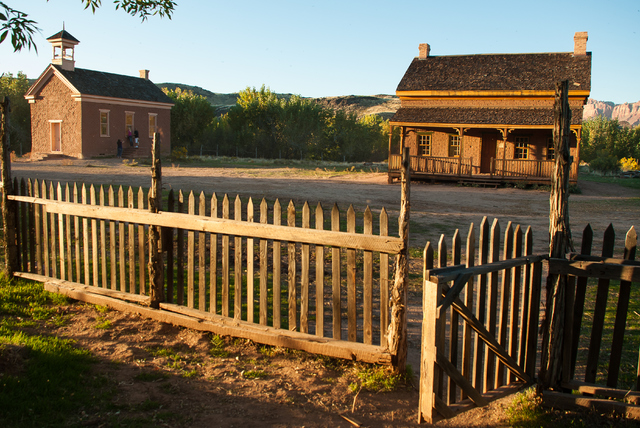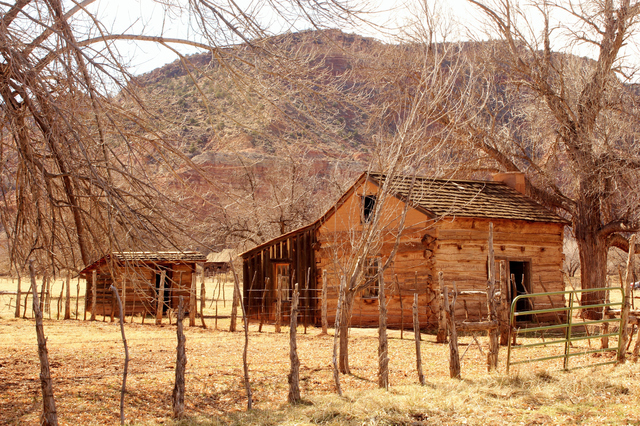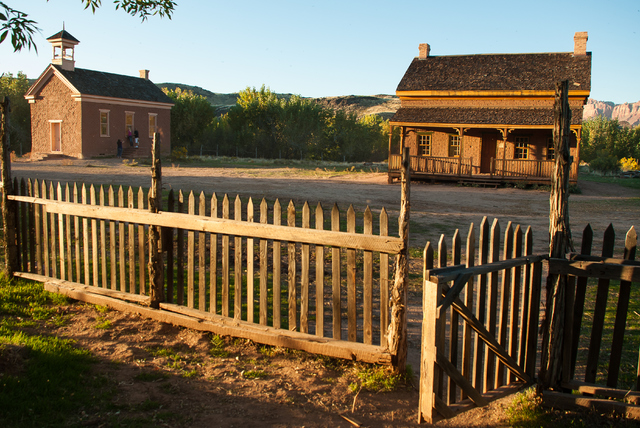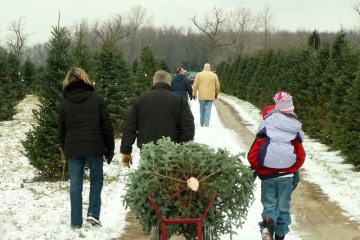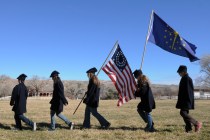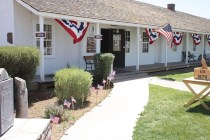Utah ghost town is rich in pioneer history
Surrounded by serene pastures and stately groves of trees with the soaring cliffs of Zion National Park for a beautiful backdrop, tiny Grafton ghost town invites visitors to step into its pioneer past. Established by Mormon families in 1859, this intriguing historic landmark lies across the Virgin River from Rockville, one of several pioneer-era towns along Utah’s Highway 9, the main access road for Zion.
(From Las Vegas, follow Interstate 15 north into Utah, watching for the Highway 9 exit toward Hurricane a few miles beyond St. George. As you drive through Rockville toward Zion, look for Bridge Road on the right. Turn there, crossing the river on a single-lane bridge. Keep turning right at any fork to follow the graded road that parallels the river for a few miles before it dead ends at old Grafton.)
Rich in history but abandoned in 1945, Grafton might have disappeared if not for the creation of a preservation group in 1997. The Grafton Heritage Partnership worked to list the old town on the National Register of Historic Places.
Much of what visitors see today in Grafton is the work of that group — the signs, restoration of the gravesite fence and rehabilitation of some of town’s original buildings. Volunteers restored two adobe buildings, the main Russell residence built in 1862 and the handsome two-story schoolhouse erected in 1886 that also served as church and social hall. Grafton Heritage Partnership also purchased about 160 acres around Grafton to ensure the site retains its pastoral setting. The group plans to remove exotic trees that thrive along the river and to replant native cottonwoods, willows and grasses.
Private owners near the town site restored three other early homes, outbuildings and split-rail fences to add to Grafton’s appeal. Visitors today park at the end of the road and walk short pathways to the restored buildings for inside views.
At the Grafton Cemetery, a sign provides details of some of the pioneers buried there. Frontier life took a toll on many — particularly the young, the old and women of child-bearing age. Disease and accidents took many, but so did violence.
The five Mormon families who crossed the river in 1859 established the tiny community of Wheeler about a mile south of the permanent site of Grafton. They were soon forced by flooding to move upstream. In January 1862, the rampaging Virgin River flooded four of the 10 villages established as part of the Cotton Mission, including Grafton. The river was always a difficult neighbor, given to fits of flooding and supplying irrigation water so silt-laden that farmers had to dredge channels frequently. The Cotton Mission produced cotton, but the farm families were hungry and most turned instead to planting gardens and orchards and raising poultry and livestock.
The cemetery’s largest grave — surrounded by a wooden fence — is the final resting place of Joseph Berry, his brother Robert and Robert’s young wife, Isabelle, who died in 1866, a violent year in Grafton’s history. The Berry family fell victim to the nascent region’s long conflict with native people during the Black Hawk War. The times were so troubled that Mormon leader Brigham Young called the people to regroup, leaving their homes for larger settlements. The farm families in Grafton retreated to Rockville, crossing the river daily to tend their fields, but never alone or unarmed.
The three members of the Berry family were killed by hostile natives as they headed home to another town east of Zion National Park. Their killings were in retaliation for the shooting of several Indians by the Utah Militia following the killings of two ranchers and theft of cattle at Pipe Spring by marauding Navajos from south of the Colorado River. Their bodies were brought to Grafton for burial during a short time when the town served as county seat of the wrong county. Grafton was then thought to be in Kane County, but later surveys placed it in Washington County.
Grafton was resettled in 1868. Never a large town, Grafton had 28 residents by 1869. Many families moved to Hurricane when a new canal brought water in 1906, some moving their homes. The last resident left Grafton in 1945.
Grafton might look familiar to lovers of Western movies, including 1969’s “Butch Cassidy and the Sundance Kid.”
Margo Bartlett Pesek’s Trip of the Week column appears on Sundays.



